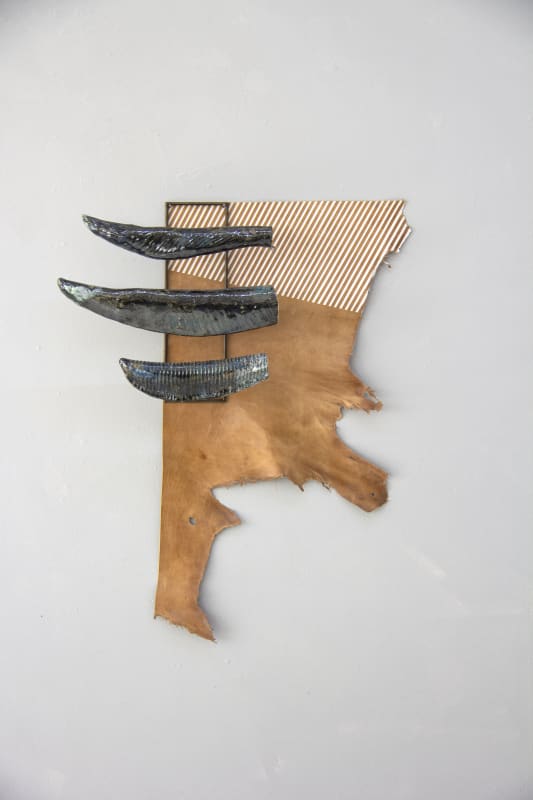My work situates the fabrication and dismantlement of our surroundings as a reconsideration of ourselves, using the negative spaces and absences within material forms as a medium for narrative and identity.
Yeni Mao
Born in 1971 in Guelph, Canada, Yeni Mao is a Chinese-American sculptor whose practice engages with themes of fragmentation, cultural fusion, and the physical and psychological tension between restraint and chaos. He earned a BFA from The School of the Art Institute of Chicago and further trained in foundry work in California and architectural industries in New York.
Mao constructs his works predominantly from steel, ceramic, and leather, assembling them into architectonic, cyborg-like forms that suggest unraveled bodies and fragmented environments. His sculptures emphasize negative space and absence as critical elements, creating a circumstantial framework that dialogues with material history and contemporary production processes.
Often embedding references to subcultures, deviance, and personal family mythologies, Mao’s work explores themes of otherness, domination, and order within cultural and transnational contexts. He situates the parallel between the anatomy of the body and building systems as a metaphor for the way individuals and societies construct, dismantle, and reconsider themselves.
Since relocating to Mexico City in 2016, Mao has presented solo exhibitions including Innumerable Fires and Yerba Malaat Campeche (Mexico City), An Array of Disruptions and Codependencies at Brooke Benington (London), and a solo presentation with Make Room at Frieze Los Angeles. His work has been included in group shows at Museo Tamayo, Museo Anahuacalli, and Dallas Contemporary, and is part of prominent collections such as Colección Jumex and the Kadist Foundation.
Recipient of the Pollock-Krasner Foundation Grant (2021), Yeni Mao’s work has been featured in Art in America, The New York Times, Frieze, and Time Out New York. His ongoing projects continue to unpack the complex interrelations of materiality, identity, and cultural displacement through sculptural language.

